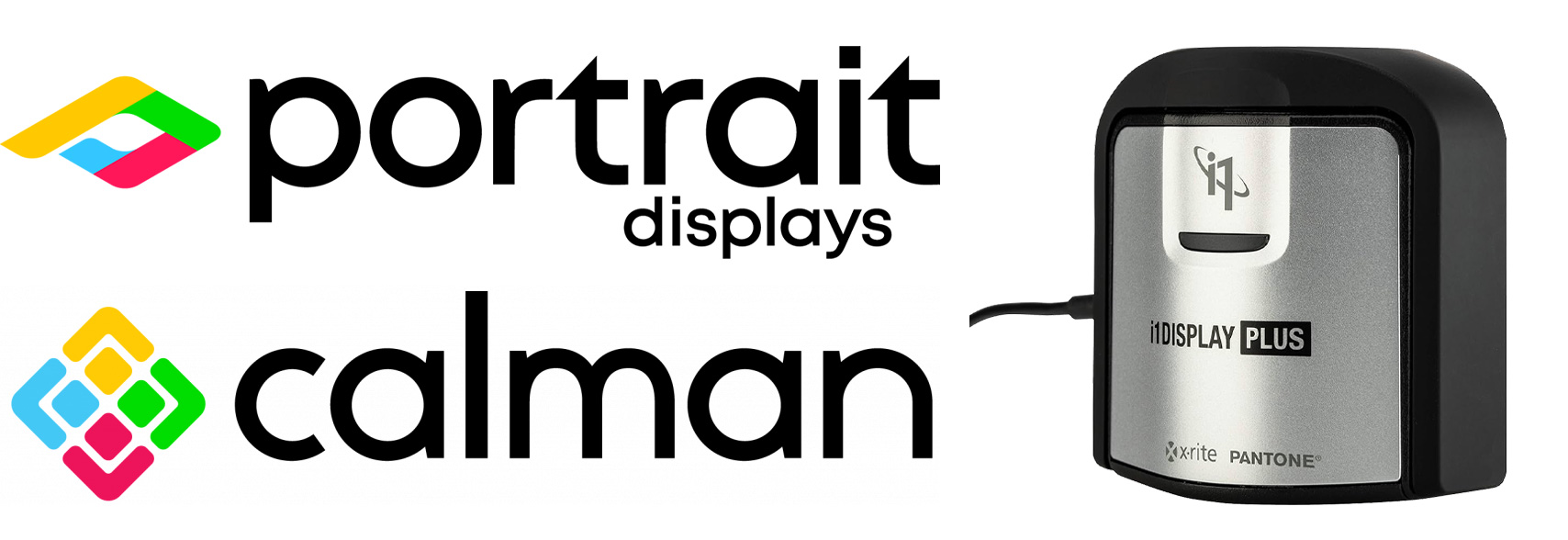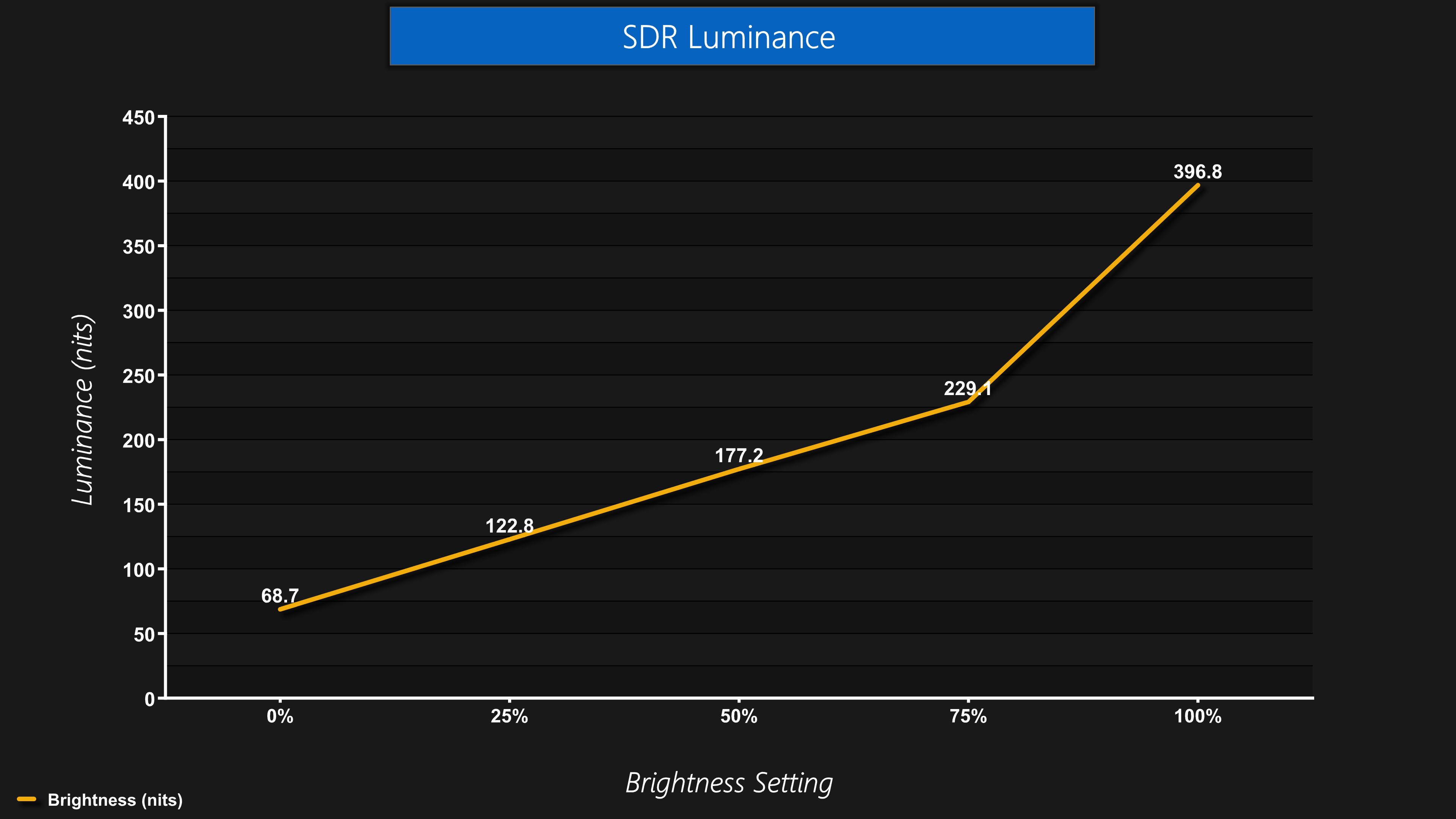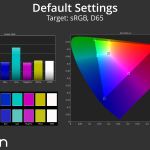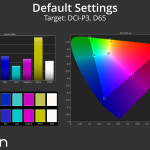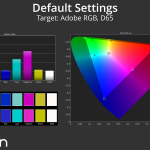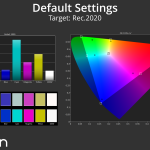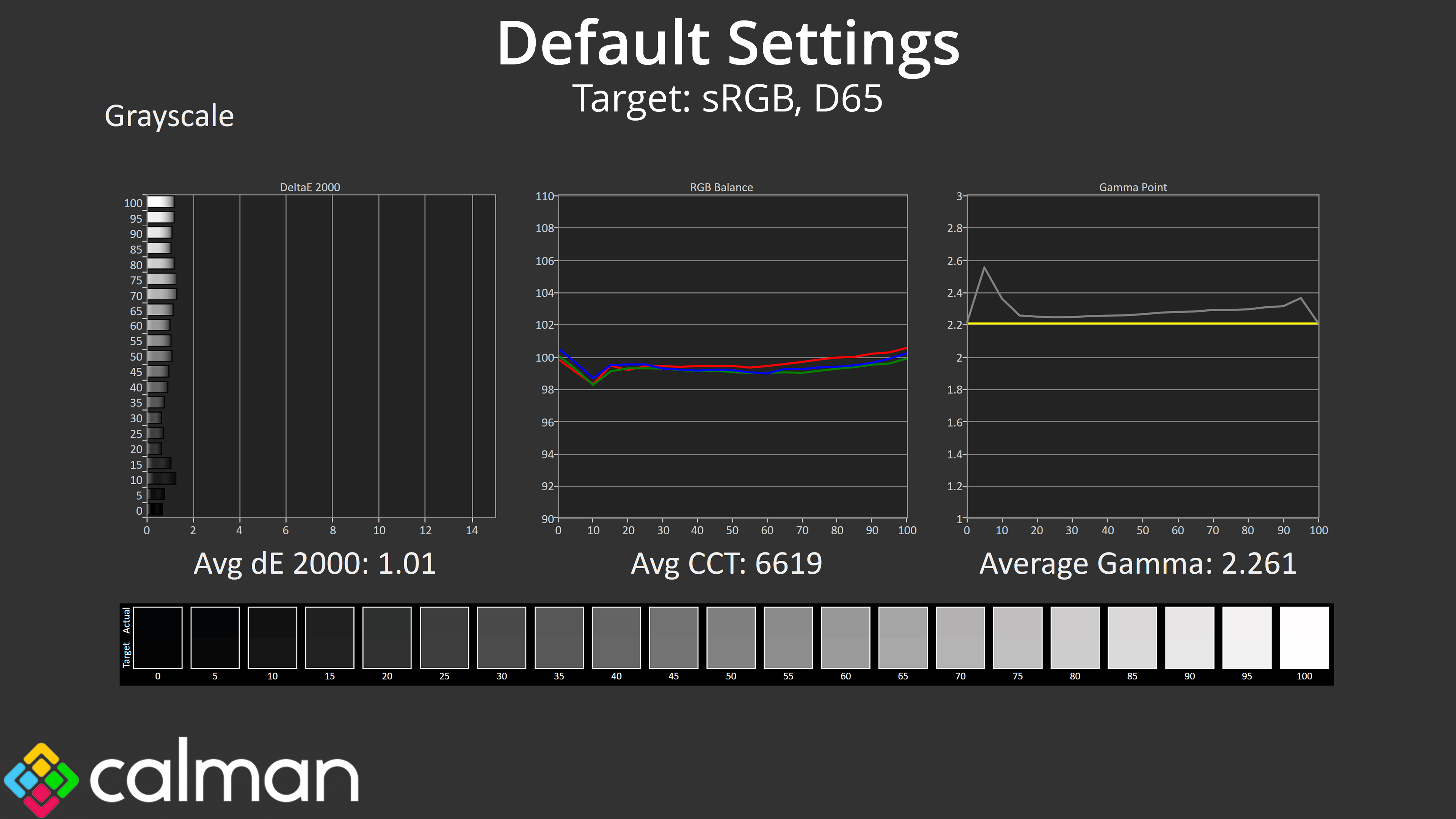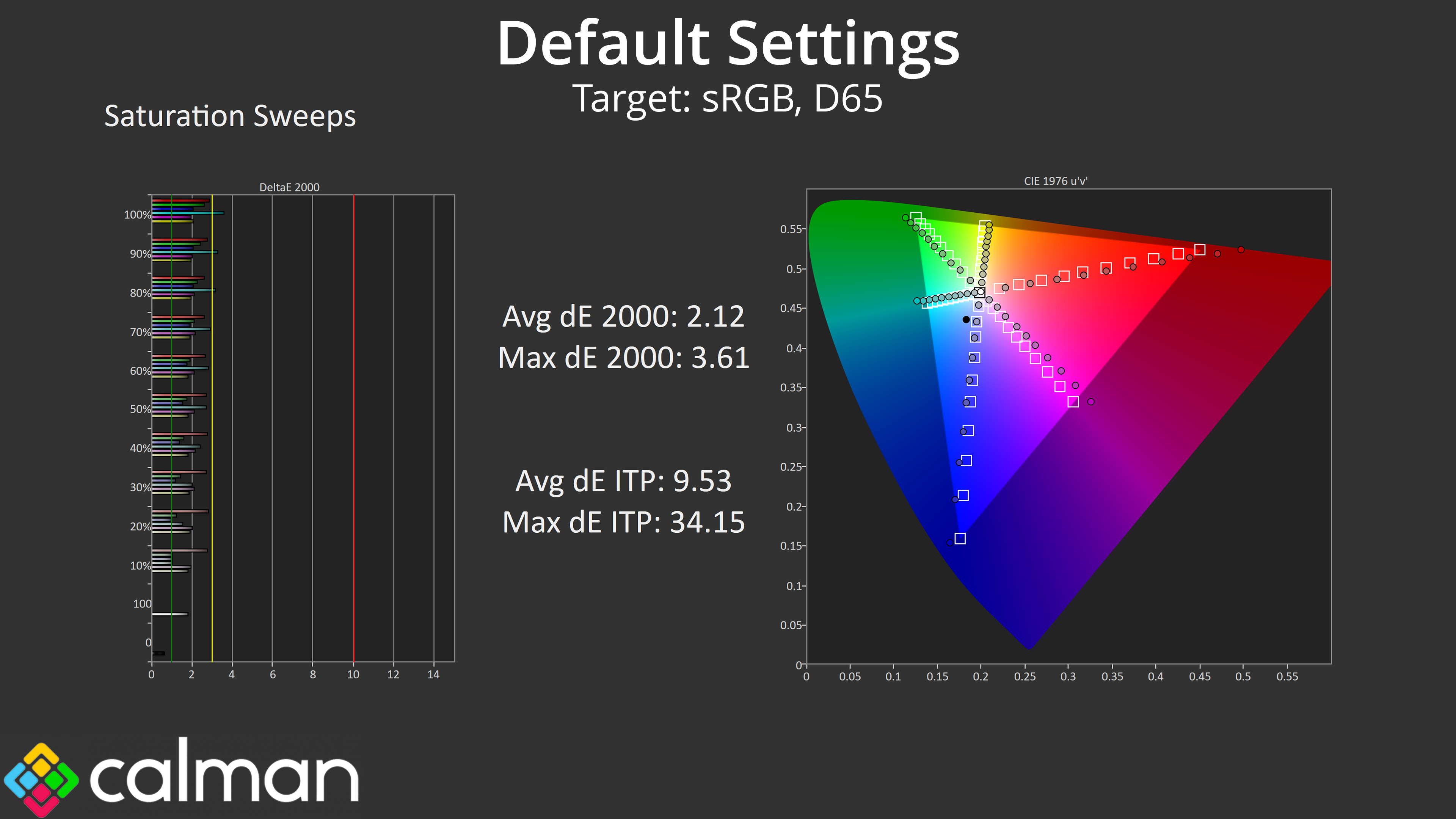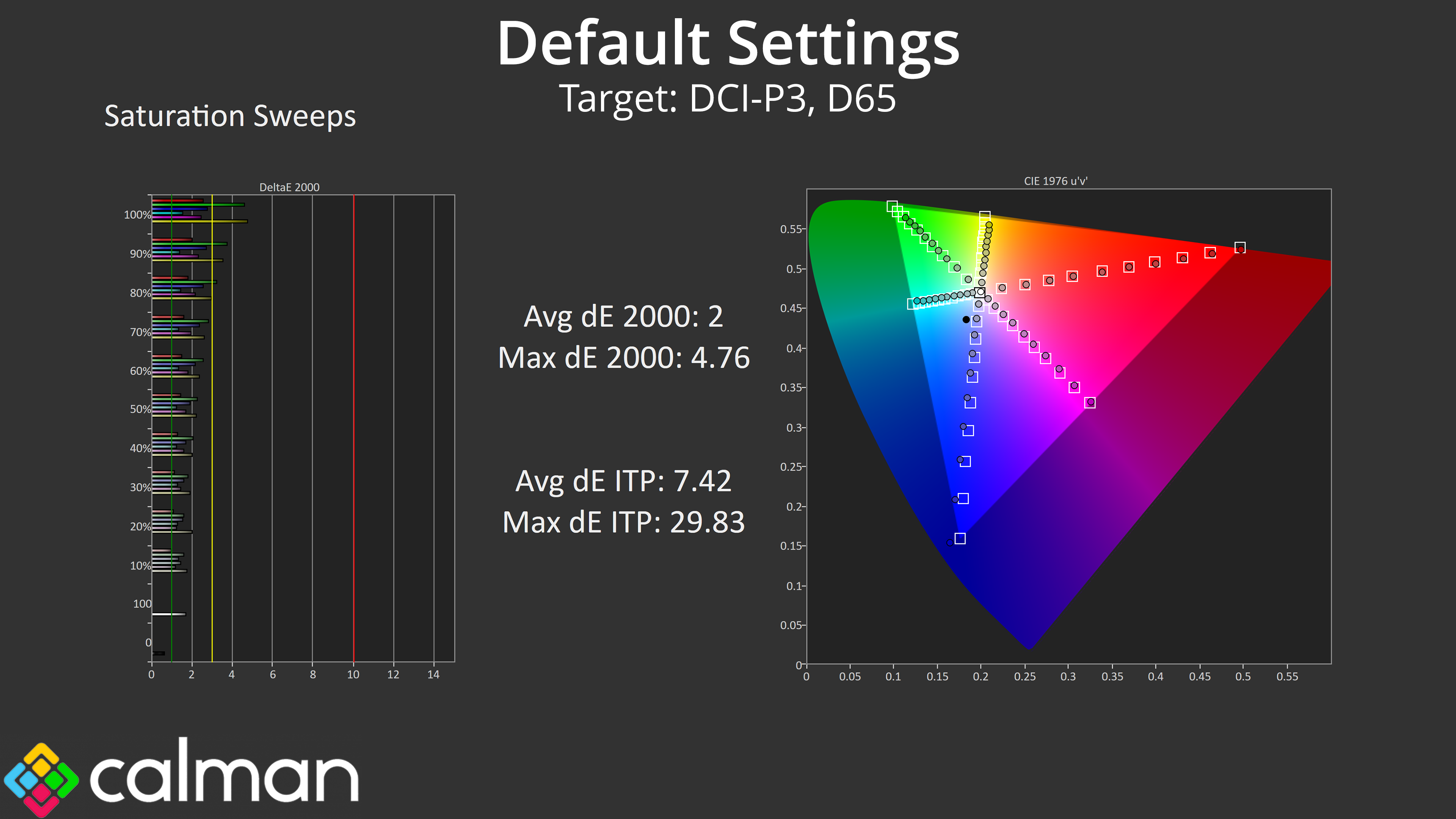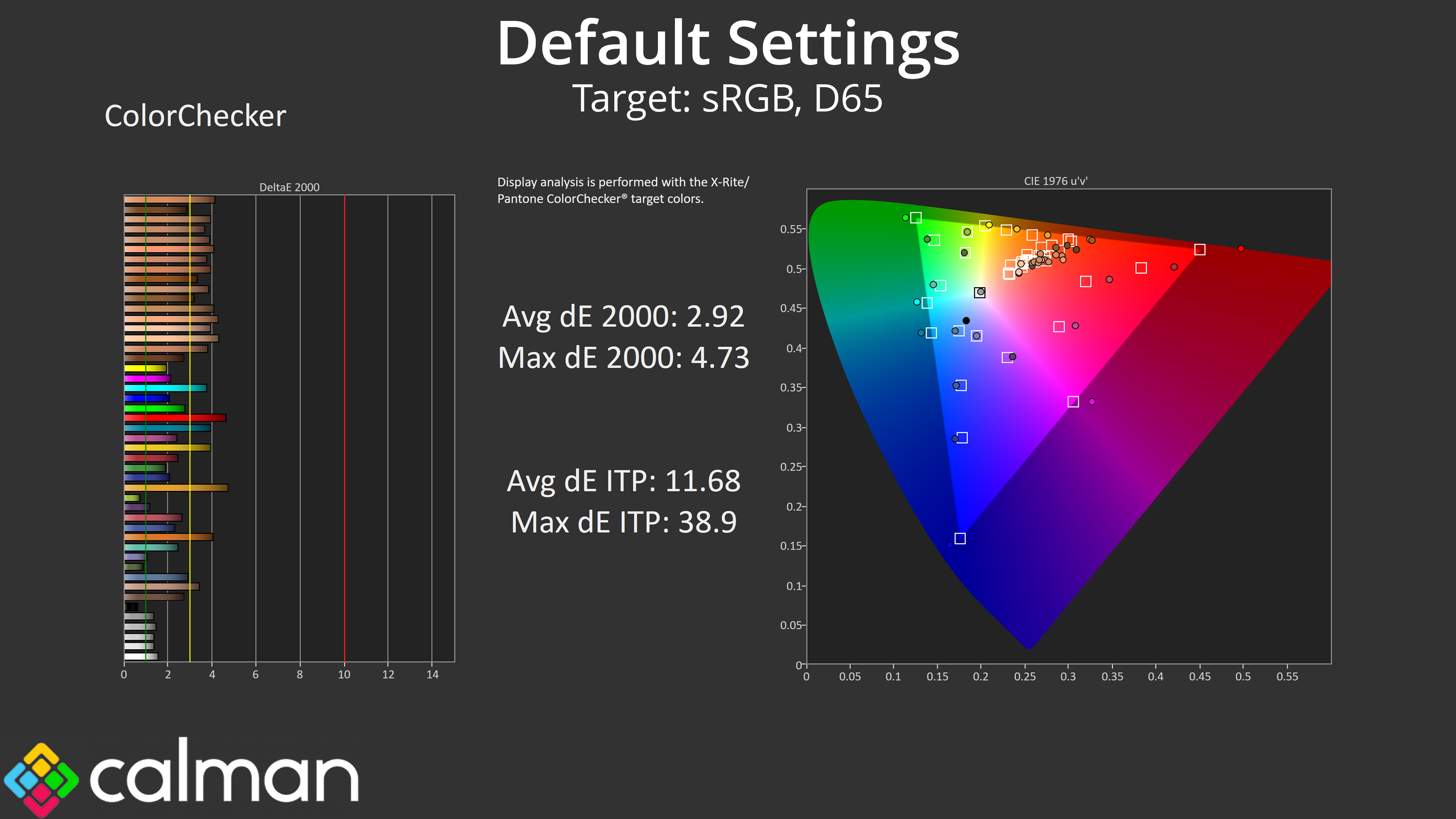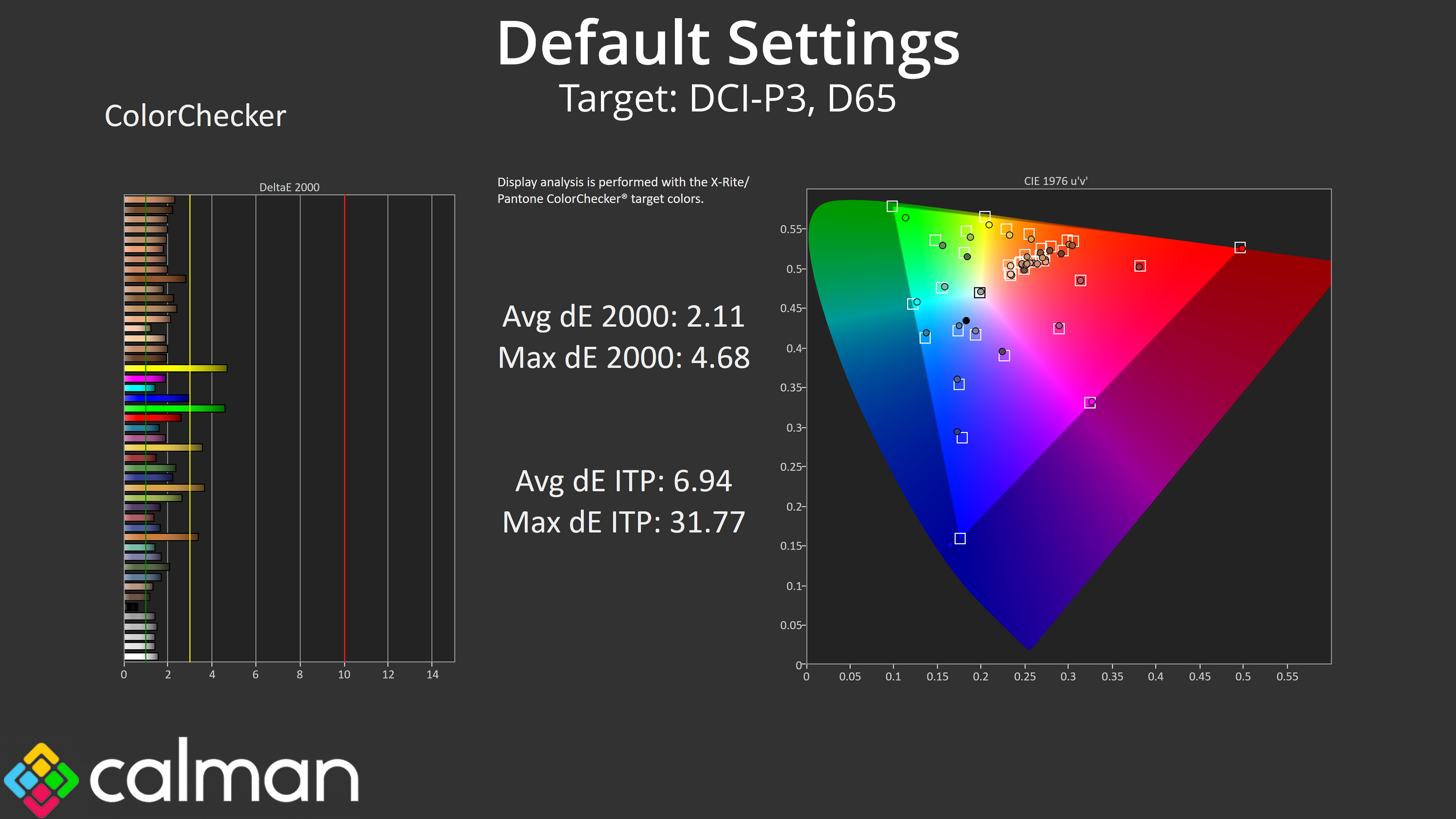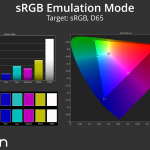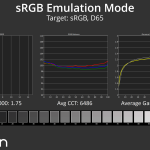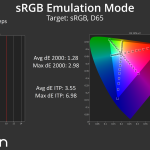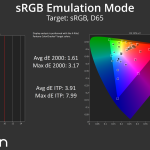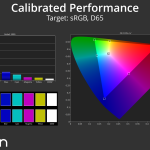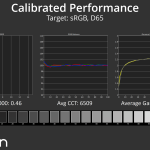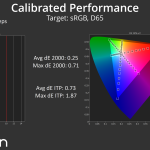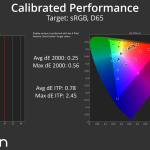Our main test involves using an X-Rite i1 Display Pro Plus colorimeter and utilising Portrait Display's Calman Ultimate software. The device sits on top of the screen while the software generates colour tones and patterns, which it compares against predetermined values to work out how accurate the screen is.
The results show:
- A monitor’s maximum brightness in candelas or cd/m2 at various levels set in the OSD.
- A monitor’s contrast ratio at various brightness levels in the OSD.
- Gamut coverage, primarily focusing on sRGB and DCI-P3 colour spaces.
- Greyscale accuracy, measured across 20 shades, with an average colour balance reported.
- The exact gamma levels, with a comparison against preset settings in the OSD.
- The colour accuracy, expressed as a Delta E ratio, with a result under 3 being fine for normal use, and under 2 being great for colour-accurate design work.
We first run these tests with the display in its out-of-the-box state, with all settings on default. If there is an sRGB emulation option or other useful mode then we may test that too. We then calibrate the screen using the Calman Ultimate software and run the tests again.
You can read more about our test methodology HERE.
Default settings
Brightness and Contrast (Full Screen)
| OSD Brightness | White Luminance (cd/m2) | Black Luminance (cd/m2) | Contrast Ratio |
| 0% | 68.7 | 0.059 | 1170:1 |
| 25% | 122.8 | 0.106 | 1160:1 |
| 50% | 177.2 | 0.153 | 1158:1 |
| 75% | 229.1 | 0.198 | 1158:1 |
| 100% | 396.8 | 0.341 | 1165:1 |
Starting testing with brightness and contrast, we see a solid range of brightness from 68.7 nits up to just below 400 nits, which exceeds Evnia's claim of 300 nits typical. Black levels are reasonably good for an IPS, resulting in contrast that's around 1160:1 – pretty typical for a modern IPS, but again slightly higher than Evnia's 1000:1 claim.
It's a very minor point but the only thing I'd say about the brightness is that the actual output luminance doesn't ramp up evenly – it does until you hit 75%, but then the measured brightness from there up to 100% clearly progresses at a much more aggressive rate, as you can see from this line graph. Does it really matter? Perhaps not, but users would get more control if the steps were even across the whole range, rather than having the last 25% ramp up so quickly.
Gamut (CIE 1976)
| Colour space | Coverage (%) |
| sRGB | 99.8 |
| DCI-P3 | 93.9 |
| Adobe RGB | 91.5 |
| Rec.2020 | 69.6 |
As for gamut, it's pretty wide considering the price of the monitor – it generally exceeds the sRGB space, then delivers 93.9% DCI-P3 coverage, alongside 91.5% reporting for AdobeRGB, and then 69.6% coverage for Rec.2020. We have seen wider gamuts, but is it really going to matter to the target audience considering it's a £150 gaming monitor? I don't think so.
Greyscale
Despite that low price, the factory calibration of the 27M2N3501PA is impressive. The colour balance, for instance, is very even and averages 6619K, very close to the 6500K target. Gamma has one small spike early on, which results in some lost dark shadow detail, but otherwise comes fairly close to the 2.2 target and averages 2.261. The proof is in the pudding though, and the average greyscale dE of just 1.01 speaks for itself!
Saturation
Saturation results are also fine – there is some oversaturation given the monitor's gamut exceeds the sRGB space, but relative to DCI-P3 the average dE is 2 on the nose, so it's a good showing.
Colour Accuracy
The same goes for colour accuracy – relative to sRGB we're looking at an average dE of 2.92 which is to be expected given the oversaturation, though it does improve to 2.11 relative to DCI-P3.
sRGB Emulation Mode
Thankfully Evnia also provides an sRGB mode in the OSD which works pretty well. It clamps the gamut to prevent oversaturation while also delivers accurate greyscale, though gamma does get slightly too high towards the end of the curve. Both saturation and colour accuracy dE figures are much improved over stock, though, making this mode well worth using.
Calibrated Results
Of course, for the best results we also ran a full calibration, and that led to stellar accuracy across the board. I can't imagine too many people will be calibrating a £150 gaming monitor, but it goes to show what the panel is capable of if you have the right software and hardware tools.
 KitGuru KitGuru.net – Tech News | Hardware News | Hardware Reviews | IOS | Mobile | Gaming | Graphics Cards
KitGuru KitGuru.net – Tech News | Hardware News | Hardware Reviews | IOS | Mobile | Gaming | Graphics Cards


